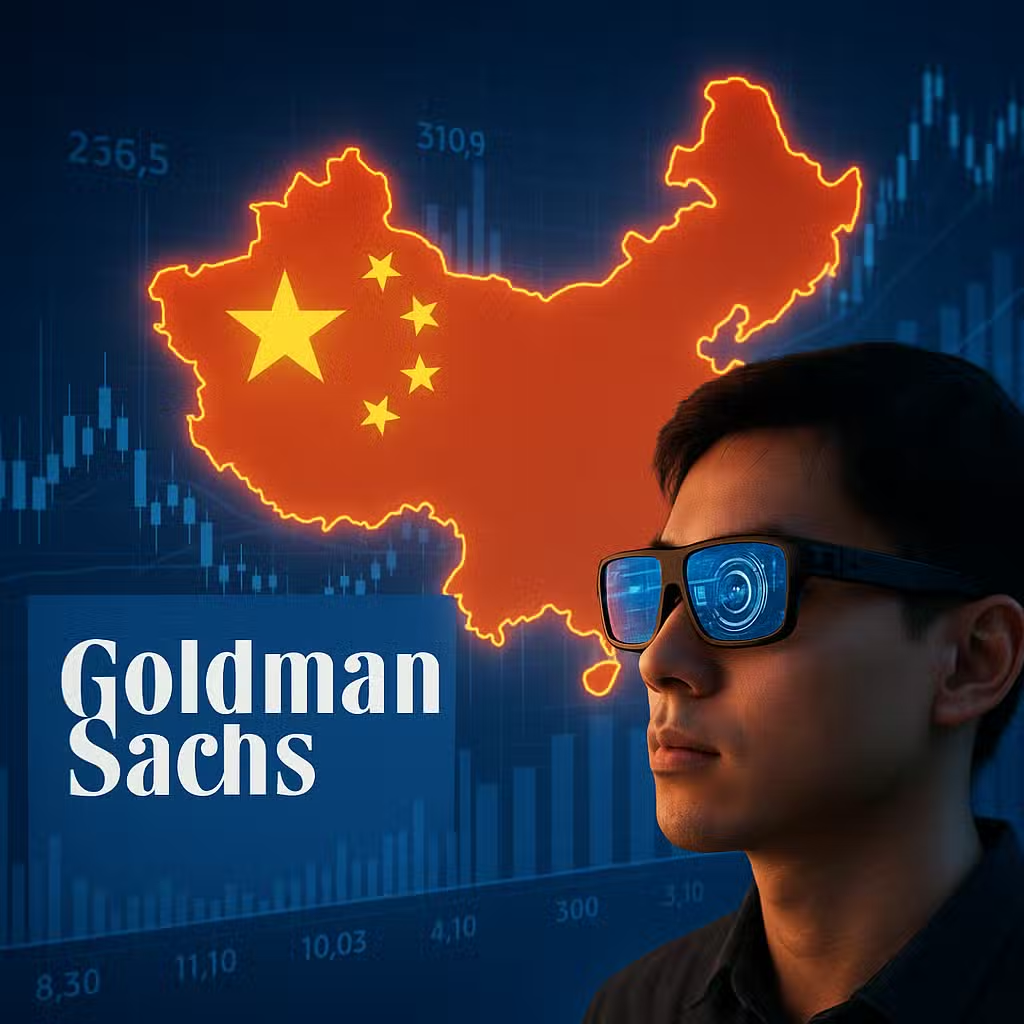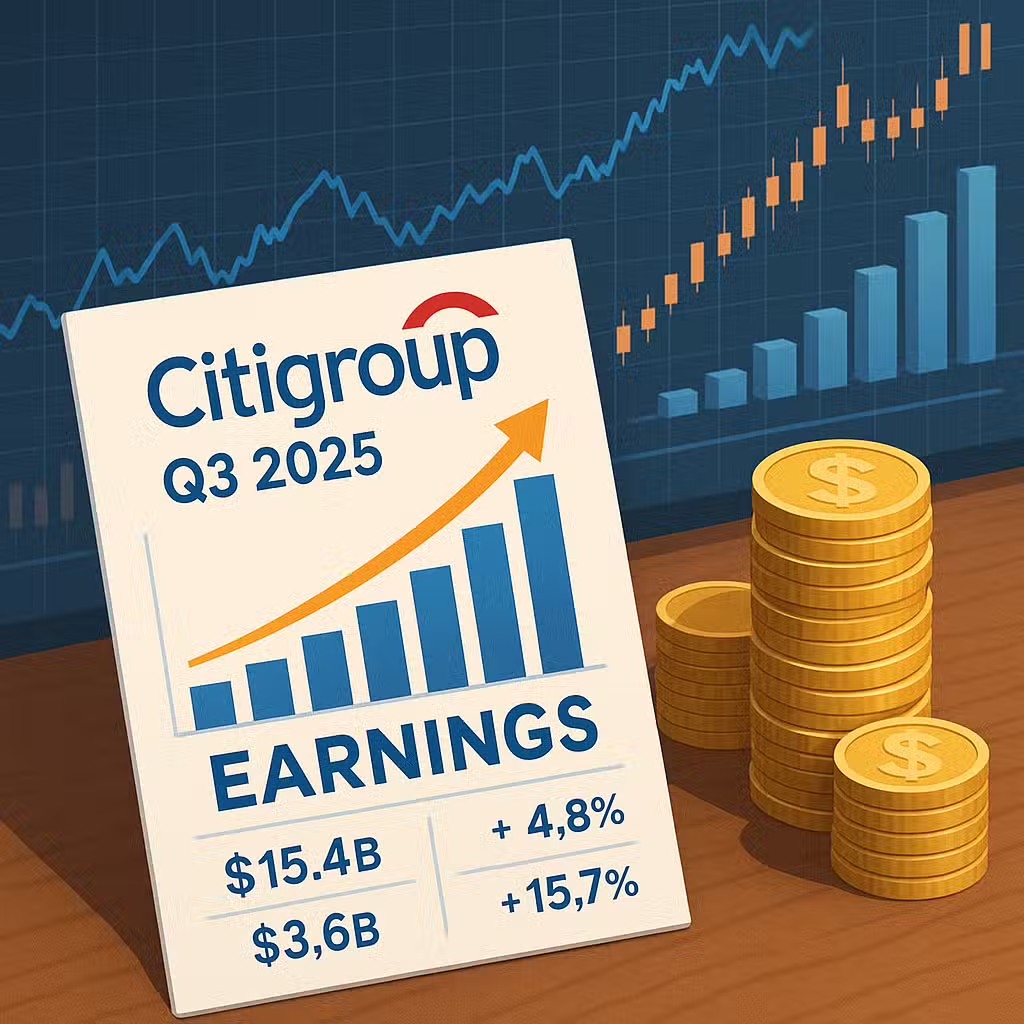Goldman Sachs Invests in China’s Growing AI Glasses Market, Highlighting New Tech Opportunities
Imagine if your regular sunglasses could talk to you, play your favorite song, or even translate another language right in your ear. That’s what’s happening now with smart glasses, and it could shake up the tech world just like when smartphones first came out.
Why Investors Should Pay Attention
Smart glasses aren’t just a cool gadget—they could change how people use technology every day. For investors, this means a whole new area where companies can grow and make money. It’s like spotting the next big thing before everyone else does.
Bull Case: Why Smart Glasses Could Be Big
- Growing Demand: Meta (the company behind Facebook) has already sold more than 3 million pairs of its Ray-Ban Meta smart glasses in less than two years (Statista).
- New Features: Alibaba’s new Quark AI Glasses can make calls, play music, translate languages in real time, and even write down what’s said in meetings—hands free.
- China’s Supply Chain: Many parts for smart glasses are made in China, and local companies like Xiaomi, Meizu, HTC, and INMO are launching their own versions. This could boost sales for Chinese tech suppliers.
- Better Technology: Improvements like longer battery life and brighter displays make smart glasses more useful and attractive to buyers.
- Big Shopping Events: Alibaba is launching its glasses just before Singles Day, China’s biggest shopping holiday, which could lead to strong early sales.
Bear Case: Why Investors Should Be Careful
- High Prices: The new Alibaba glasses cost around $660, which might be too expensive for many people.
- Limited Availability: Some popular models, like the Ray-Ban Meta, aren’t officially sold in China, making it harder for local buyers to get them.
- Uncertain Demand: Even though some early versions are selling fast, it’s not clear if smart glasses will become as common as smartphones—or if they’ll end up as a passing trend.
- Competition: With so many companies jumping in, it might be tough for any one brand to stand out or make big profits.
Key Players and Stats
- OmniVision: Makes the special screens for Meta’s Ray-Ban smart glasses. These screens are cheaper and have better colors than older types.
- Lingyi: Sells parts to smart glasses makers and saw sales jump over 40% last year, reaching $570 million from AI and XR wearables.
- AAC: Builds tiny speakers and sensors for smart glasses and other gadgets. Their acoustics business made $490 million in just the first half of this year.
According to a recent study, the global smart glasses market could grow to $12.8 billion by 2030, up from $5.2 billion in 2023 (MarketsandMarkets).
Investor Takeaway
- Watch for Breakout Winners: Track which tech companies are getting the most buzz and sales, especially during big shopping events like Singles Day.
- Look at Suppliers: Chinese companies making screens, sensors, and parts could see steady growth as more brands launch smart glasses.
- Balance Hype and Reality: Remember, not every new gadget takes off. Keep an eye on real sales numbers and user reviews.
- Diversify: Don’t bet everything on one company or product. Spread your investments across several tech and supply chain names.
- Stay Updated: This is a fast-moving area. Check for news on new launches, price changes, and how buyers respond.
Smart glasses could be the next big thing—or just a flashy trend. Either way, investors who do their homework have a chance to get ahead of the crowd.
For the full original report, see CNBC







